 February 21, 2023
Pasta, Noodles & Grains
February 21, 2023
Pasta, Noodles & Grains  February 21, 2023
Pasta, Noodles & Grains
February 21, 2023
Pasta, Noodles & Grains If there was ever a risotto to make, it is this one. This creamy risotto alla Milanese is iconic and a true Italian gem. Its delicate flavor boasts earthy, yet rich and savory notes, with a texture as smooth as velvet. While I have a collection of risottos—some fun and whimsical, others traditional—this risotto recipe pays homage to what risotto alla Milanese is. While the ingredients in this classic risotto stay true, the process is broken down and made incredibly easy, because as I always say, risotto doesn’t and shouldn’t require an arm workout.
*This post is sponsored by Delallo, who is my go-to for Italian pantry staples like the ones in this recipe. As always, all thoughts and opinions are my own. Thank you for your support!
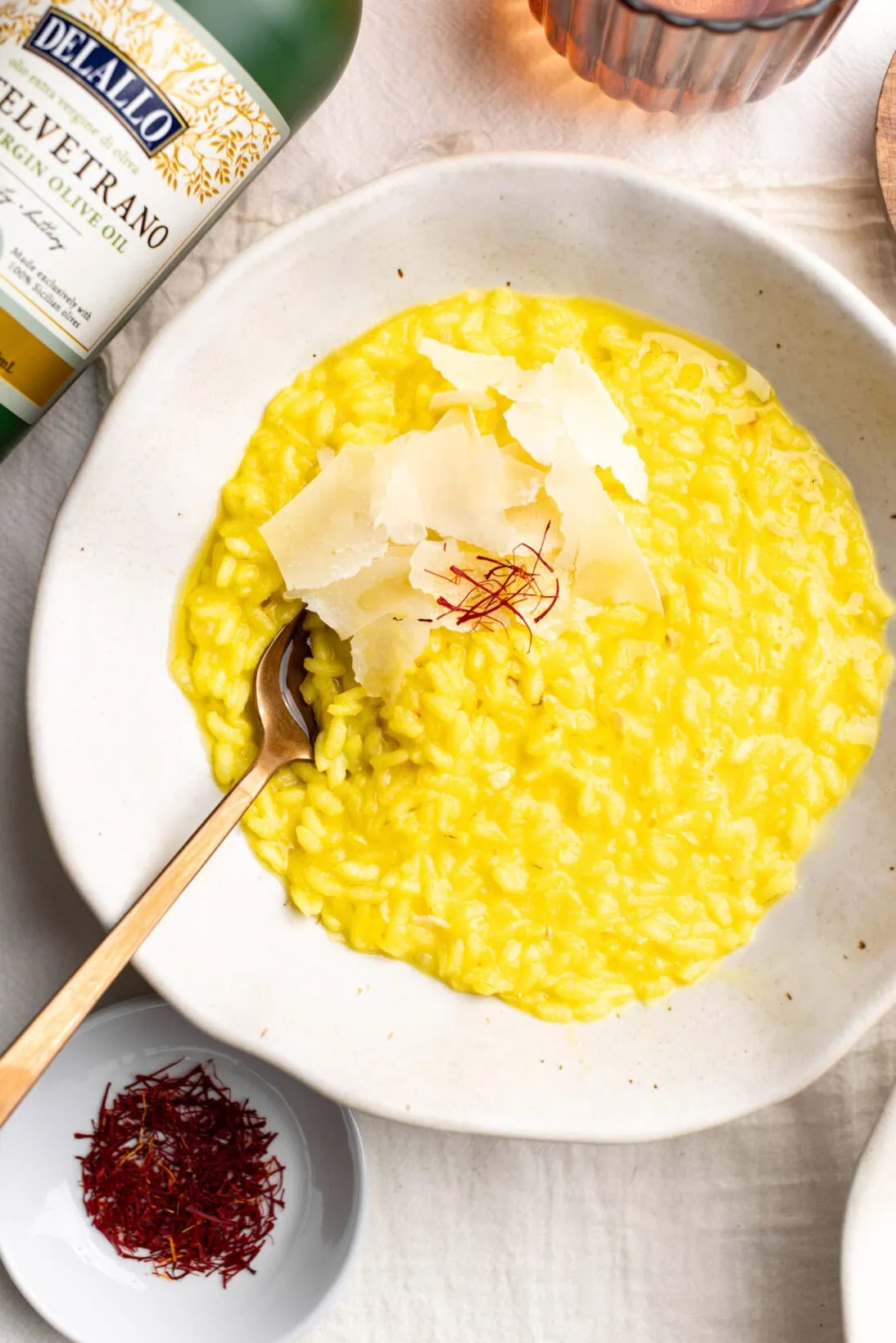
Risotto alla Milanese, also known as saffron risotto, originates from the Lombardy region of Milan, Italy and might just be one of the most iconic risottos you can make. This risotto is undeniably a showstopper with its golden hue and luxurious flavor and texture. While its rich flavor elevates it enough to become a special occasion dinner, the recipe is easy enough to be an everyday meal. Its simplicity and elegance make it a favorite among both novice cooks and seasoned chefs, and it is a must-make, in my opinion.
Wide Pan- The rice needs ample surface area to cook evenly. A wide sauté pan or even a braiser works well for this dish. If you don’t have either, a large skillet will also do. There are a lot of risotto recipes out there that call for a saucepan, and that just leads to uneven cooking. Stick to a wide, shallow pan with a little depth.

Before you dive into the very detailed instructions below on how to make this beloved dish, I thought I’d give you some tips on how to make creamy, fool-proof risotto every time. Let’s be real, risotto has a bad rep, partially because of a TV show, but also because there’s always someone with an opinion on how it needs to be made. Truth is, there are no set rules, and people who have mastered risotto will tell you it’s one of the easiest dishes you can make
Below are some tips and tricks on cooking risotto that will help you successfully make this or any other risotto at home.
I delved into this above, but it bears repeating: use the right rice. Since this is a rice dish, using the wrong rice will completely ruin the recipe.
Risotto needs to be al dente, not mushy, or even worse, hard. It’s really easy to overcook or undercook risotto if you don’t know what to look for. When done, the rice will have a slight bite to it—think of the same bite that you get from perfectly cooked pasta. It should be loose, which means when you plate it, it should spread just a bit. By the time you get the rice to the table, it will absorb a little more of that liquid and be the perfect texture.
Risotto seizes fast; trust me, I know—I have spent countless hours across 14 recipes photographing it. Remember to serve immediately.
As mentioned above, the best pan for this is a wide sauté pan or a braiser. Do not make risotto in a Dutch oven or saucepan; it won’t cook evenly.
Truth is, I cook with feeling, not tablespoons. All the recipes on this site, one way or another, started with a pinch here and a taste there. When the dish comes together, then they are further tested, and true measurements are made.
Follow the recipe below, but cook with feeling. Taste the food as it is cooking. Does it need more salt? (FYI, different brands of kosher salt have different saltiness levels.) You used all the broth yet it is still a little hard? Add a touch more broth. Don’t go making full substitutions, but trust yourself in the kitchen.
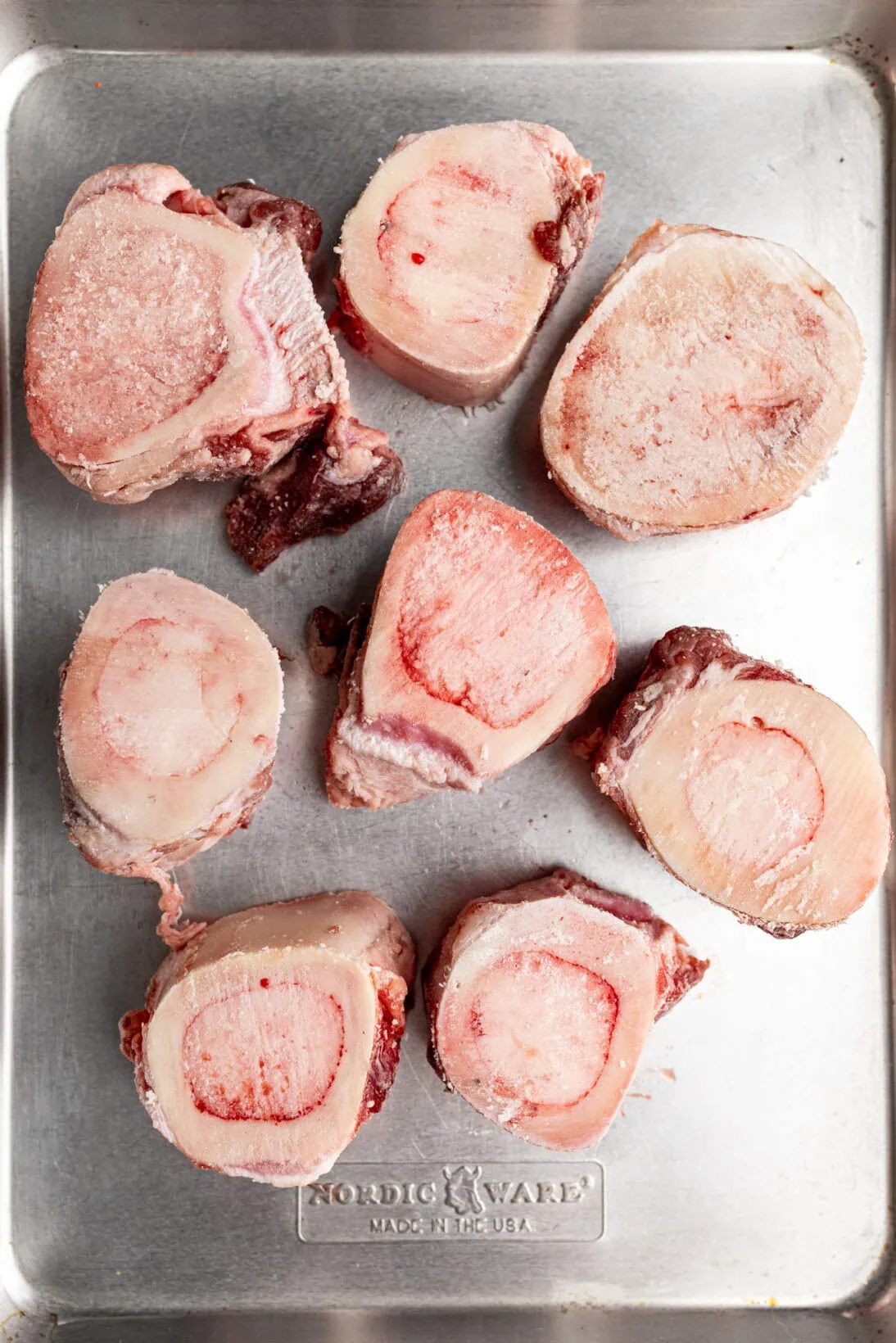
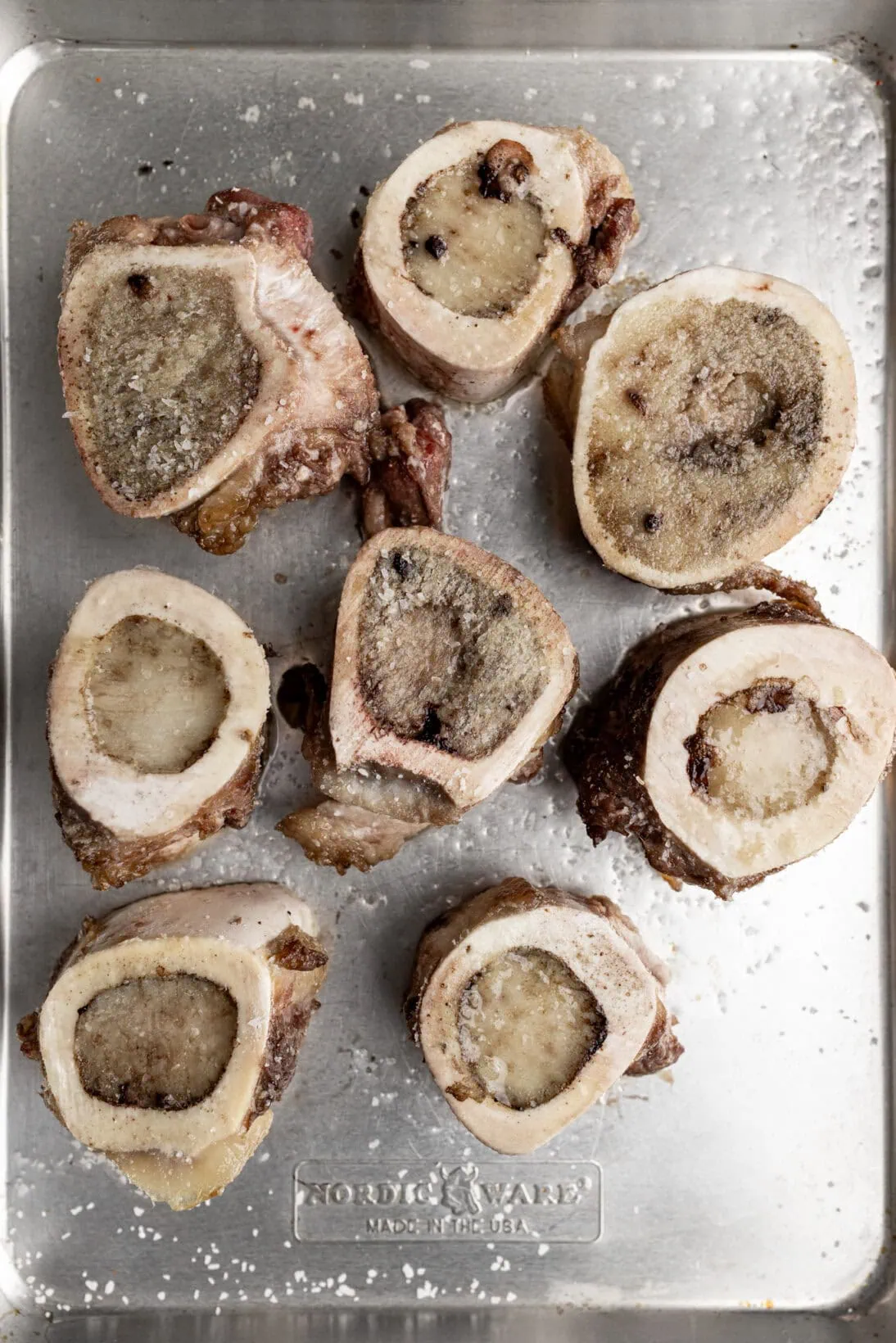
Roast the Bone Marrow – Skip this step if you are omitting the beef marrow. Preheat the oven to 400°F. Place the bone disks on a sheet tray and generously salt them. Roast for 8 minutes, enough time to loosen the marrow so you can scoop it out. Let the bones cool for 2-3 minutes before scooping out the marrow and finely chopping it. It will be fatty and a little messy, but trust me, you want to give it a fine chop.
Hot Tip! The marrow cooks just for a short time to be able to easily get it out of the bone. There is a chance that it may get a little, well, let’s call it “crusty” on top around the bone opening. Try to avoid this, but if not, it’s absolutely fine; you may just have a few marrow specks in your risotto.
Prep the Broth + Saffron –Before you even place the risotto pan on the stove, warm the broth in a saucepan over low heat. A warm broth helps maintain a consistent temperature throughout the cooking process, resulting in a better end product.
Take 1/4 cup of warm broth and pour it over the saffron threads in a small bowl. Give it a mix and allow it to steep.


Cut + Cook the Onion – This recipe calls for mincing the onion, and when I say mince the onion, I mean making micro cuts. You want the onion to be as close to the size of the rice as possible. Place the risotto pan on the stove over medium-low heat. Add 2 tbsp of olive oil and allow it to heat up. Once hot, add the onion and sauté for 2-3 minutes. Then add in the bone marrow and cook for another 2 minutes.
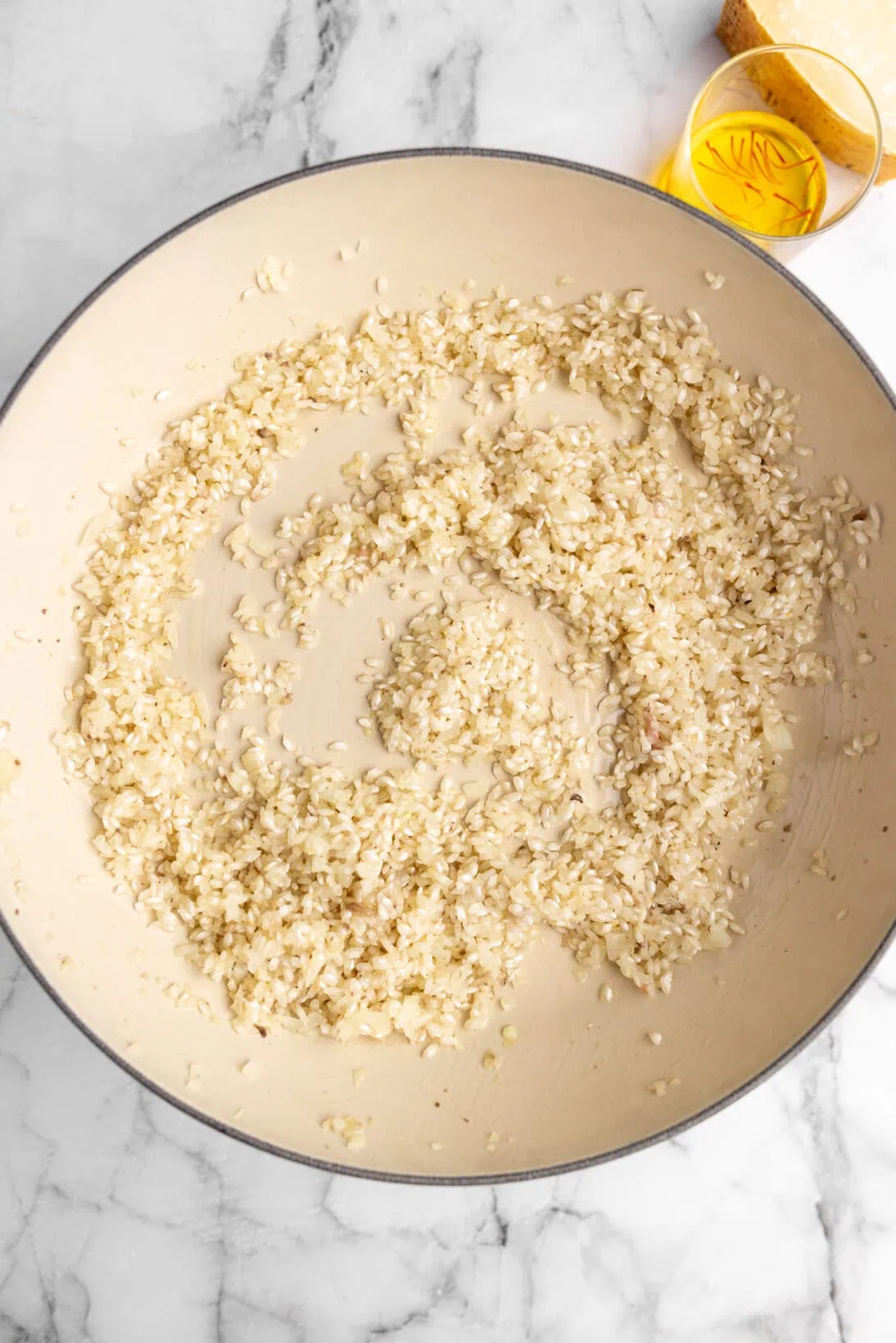
Toast the risotto – Next, add the unwashed Arborio rice to the pan and toast it for 3-5 minutes until the grains start to become translucent. Do not, and I repeat, do not wash the rice beforehand. Unlike other varieties of rice where you want to wash the rice before cooking, rinsing the rice here will strip it of its starches, starch that is needed to make this dish creamy.
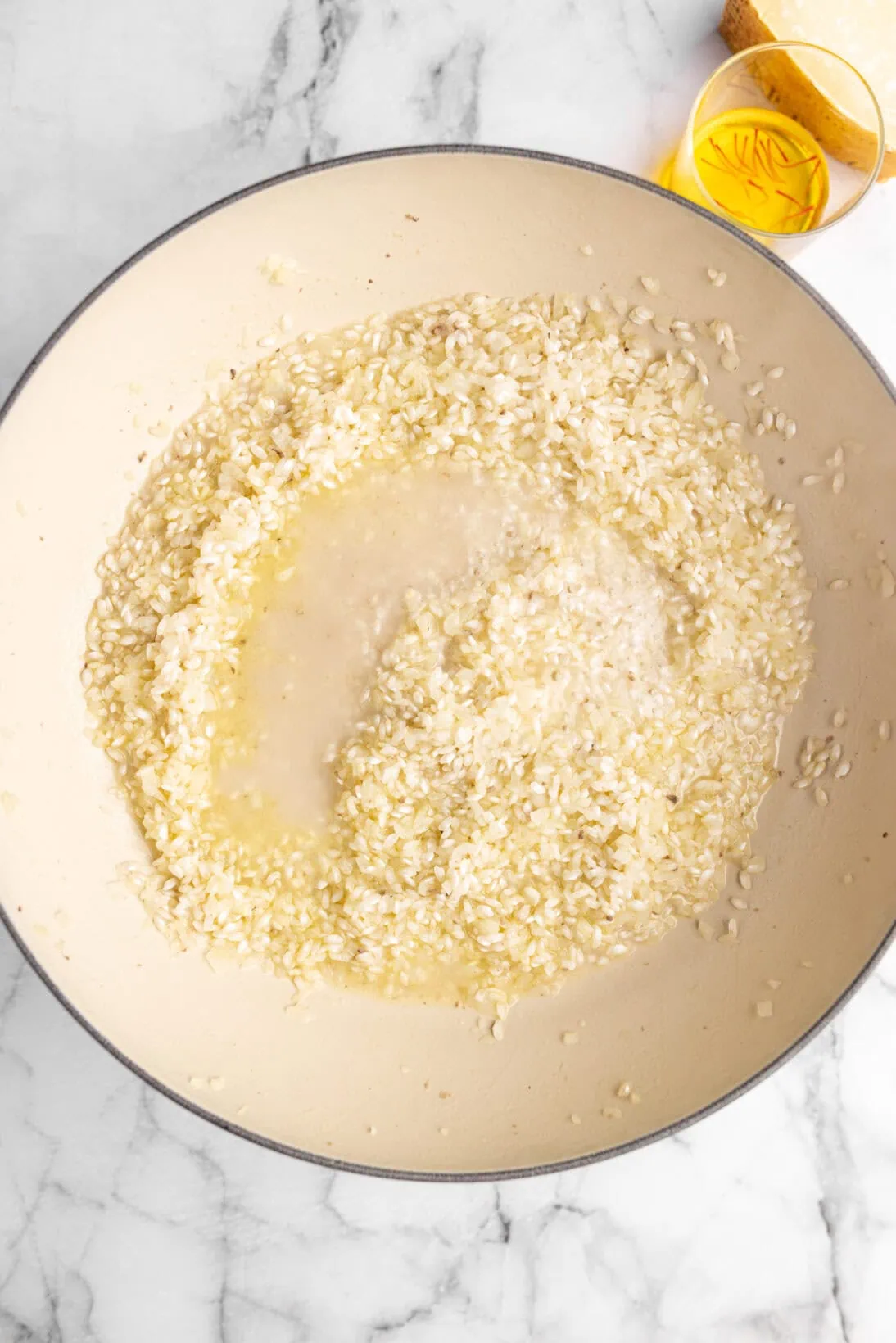
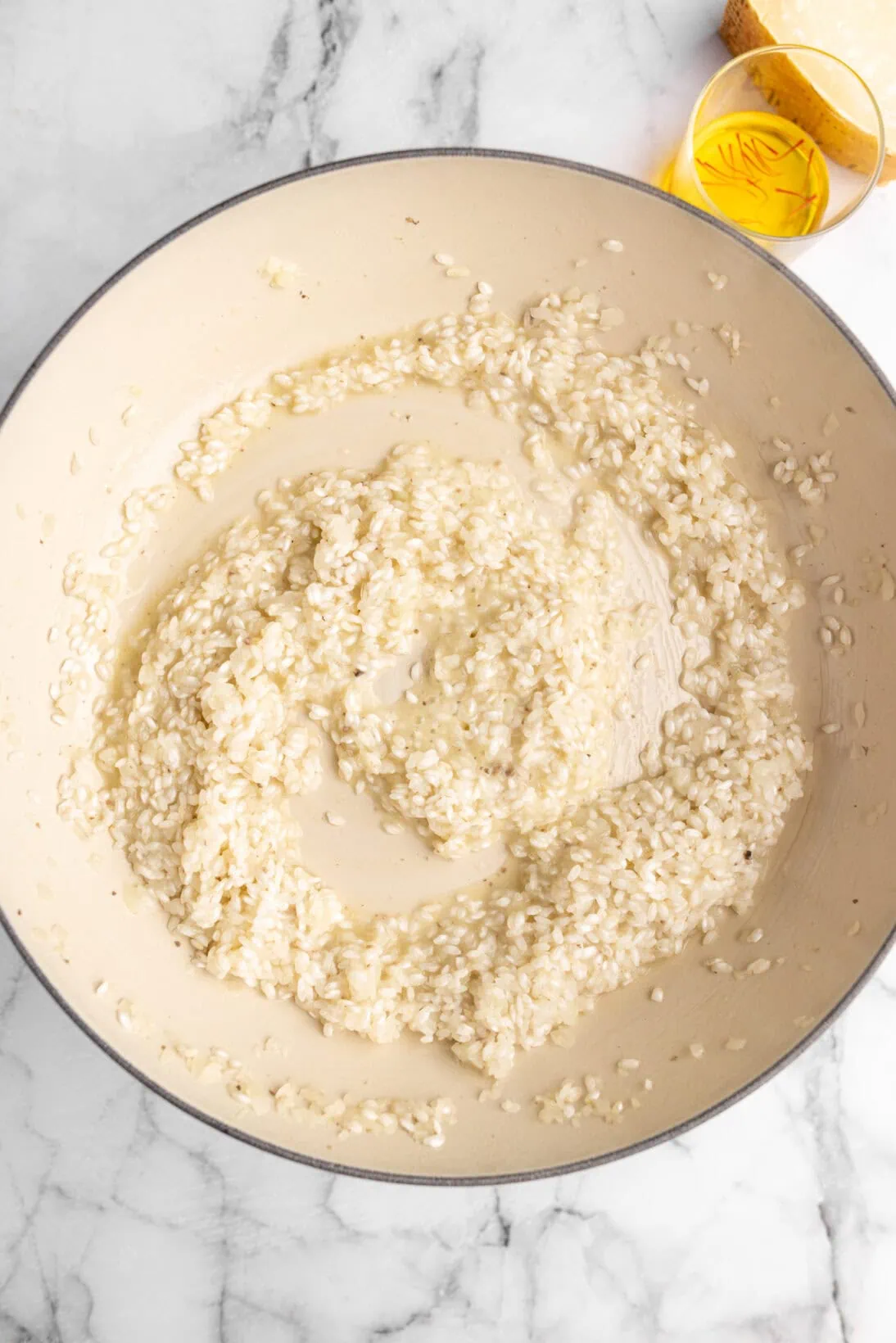
Deglaze with Wine – Add the wine to the pan and cook it off for 2-3 minutes. Typically, you would reduce wine for longer in a dish, but the rice will start to absorb the wine. When the wine has reduced and is no longer soupy, it is time to add the first round of broth.
Add the Broth – Add the warm broth to the risotto, but not all at once! For every cup of risotto, you need approximately 4-5 cups of broth. Have extra on hand to account for evaporation. My rule of thumb is to pour just enough broth to cover the risotto. When the broth starts to dip below the grains, it is time to add more.
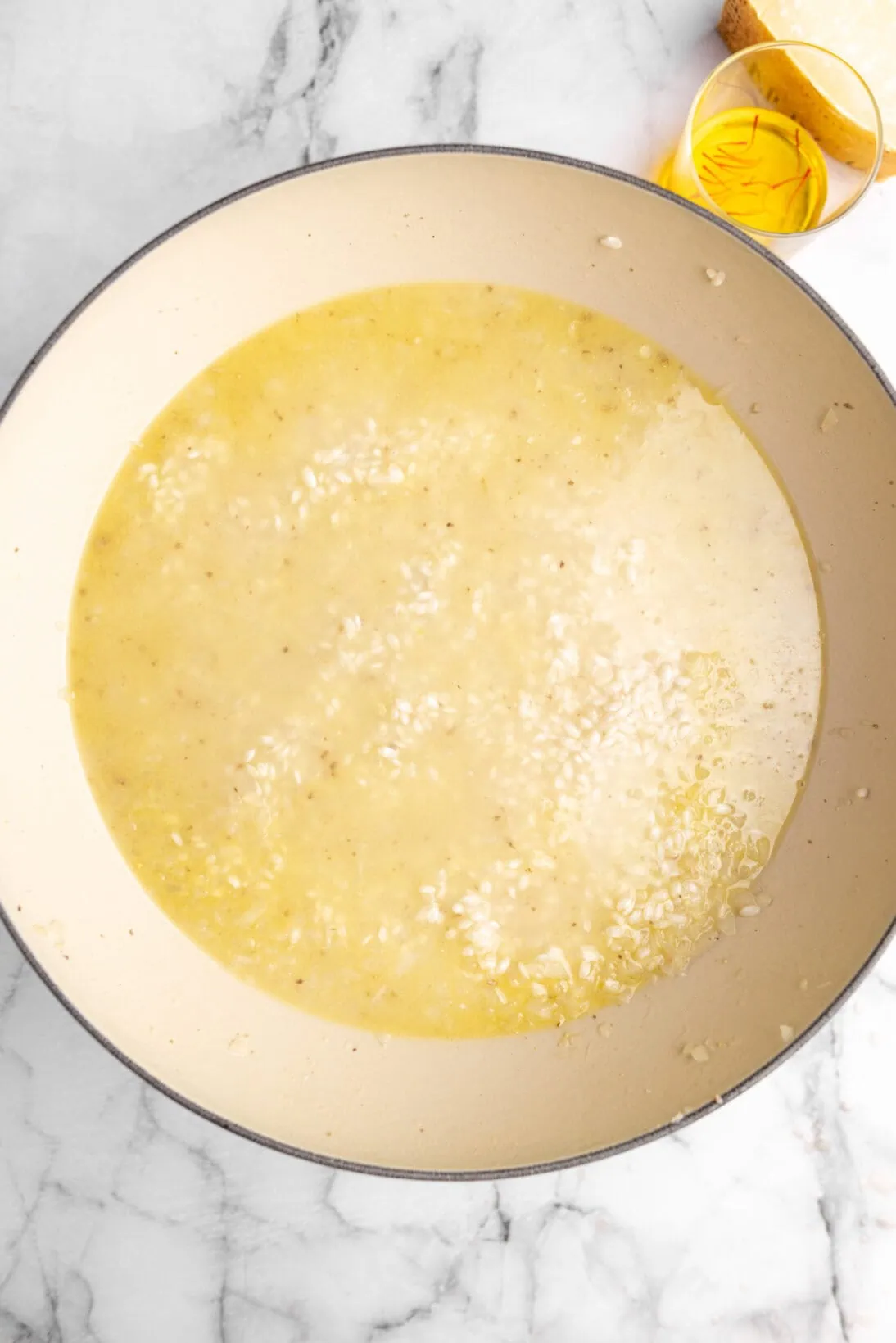

This is also the place to season with salt. I leave this up to you. Depending on how salty your chicken broth is will determine how much salt you add. After the first broth addition, taste it (avoiding the rice) and adjust the seasoning. I usually start with a heavy pinch of salt in the beginning, then adjust right before it is done.
Mix, add, shake – Mix 2-3 times per broth addition. If you end up mixing more, no biggie! Also, give the pan a mix or a shake midway to ensure the rice isn’t sticking to the bottom. I typically mix once right after I add the broth and then 2-3 times a few minutes later.
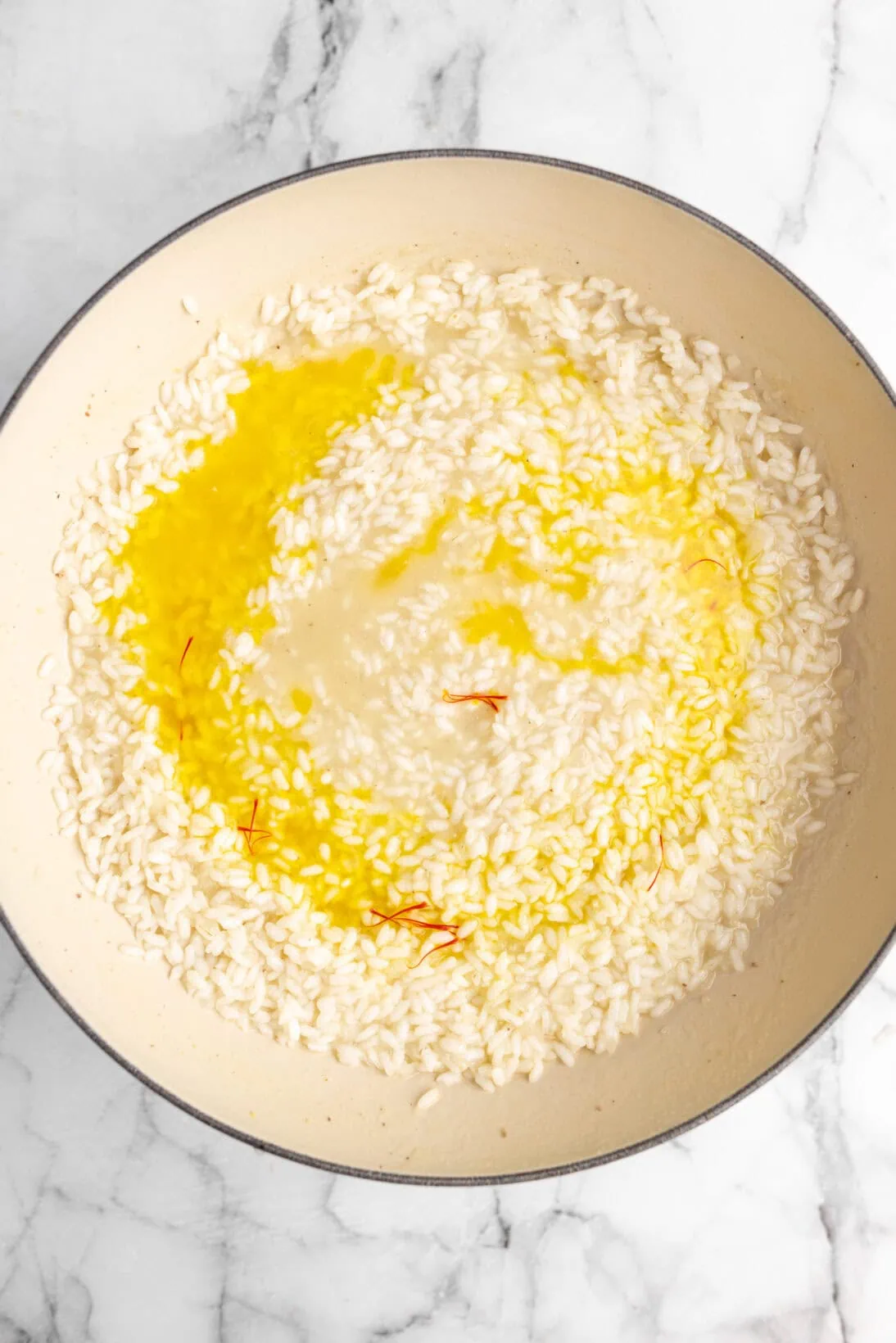

Add the Saffron – After the second addition of broth, about halfway through, pour in the saffron-infused broth. Continue to add ladles of broth until either A. the risotto is al dente, or B. until all the broth is gone. Chances are you might have a little broth left over.
Finish – When the risotto has absorbed the majority of the broth and is al dente (if it isn’t al dente yet, continue adding broth), turn off the heat. The risotto should be loose but not completely soupy; it will come together on its own in the next few minutes. Add the Parmesan cheese and mix to incorporate. Serve immediately.

Sorry to break this to you… risotto doesn’t reheat as well as you might hope. This, like all my other risotto recipes, is designed to feed 2-3 people with the ability to scale up. If you happen to have leftovers, they can be stored in an airtight container in the refrigerator for 2-3 days. When ready to reheat, the best method is to return it to the stove over low heat, with some broth to loosen it up and add moisture back in.
This risotto would be particularly delicious as arancini, also known as fried risotto balls. Recipe coming soon for that.
Can’t get enough risotto? Well you have come to the right place. Check out the collection below.
Mushroom Parm Risotto // Kale & Pancetta Risotto
Lemon Parm Risotto // Cacio e Pepe Risotto
Spicy Vodka Risotto // Brown Butter & Sage Risotto
Creamy Tomato Risotto // Smoked Gouda Risotto
Lobster Risotto // French Onion Risotto
Risotto Carbonara // Crab Risotto
Corn Risotto
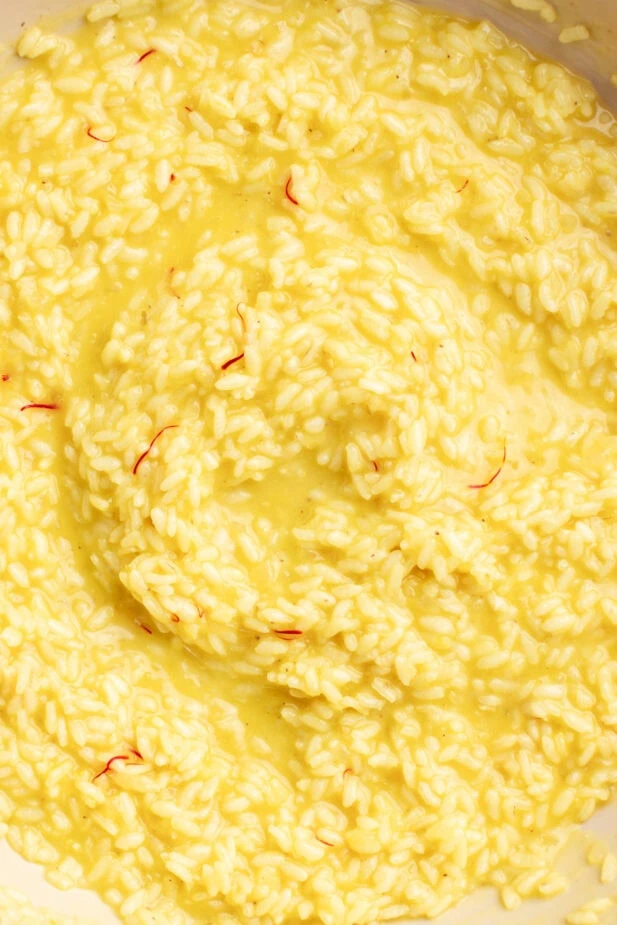
RATE + REVIEW What did you think of this recipe?